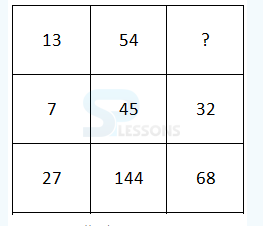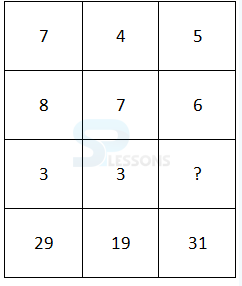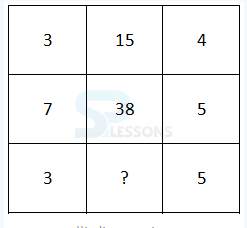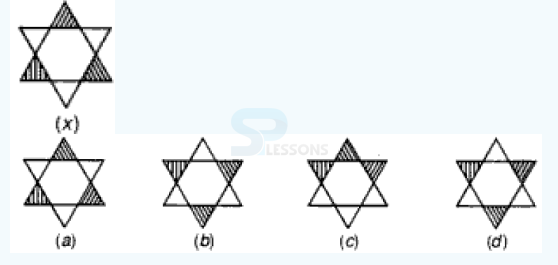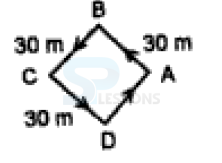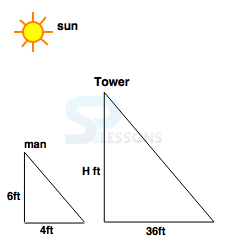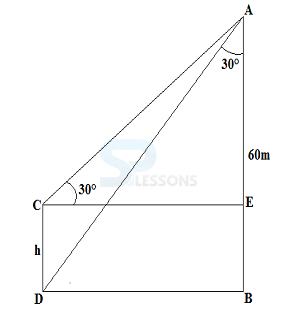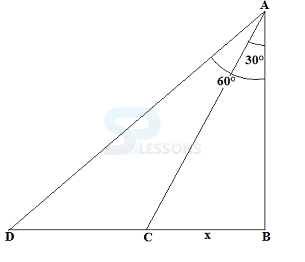 Introduction
Introduction
The article Warangal DCCB Study Guide, a preparation guide provides the sample question format of Telangana State DCCB exam. Warangal DCCB 2018 – Online Test/Examination, conducted in online Mode, has: a duration of 1 hour, a total of 100 questions, a maximum score of 100 marks, and consists of 3 sections, namely – English Language, Numerical Ability and Quantitative Aptitude/Numerical Ability. The 3 sections are separately timed and the questions can be attempted in any order.
 Pattern
Pattern
| Sl. No | Name of Tests (objective) | No. of questions | Max. Marks | Time allotted for each test (Separately timed) |
|---|---|---|---|---|
| 1 | Test of English language. | 30 | 30 | 20 Minutes |
| 2 | Test of Reasoning | 35 | 35 | 20 Minutes |
| 3 | Test of Quantitative Aptitude. | 35 | 35 | 20 Minutes |
| Total | 100 | 100 |
Penalty for Wrong Answers:
There will be the penalty for wrong answers marked in the Objective Tests. For each question for which a wrong answer has been given by the candidate one fourth or 0.25 of the marks assigned to that question will be deducted as penalty to arrive at corrected score. If a question is left blank, i.e., no answer is marked by the candidate, there will be no penalty for that question.
 Syllabus
Syllabus
[Click Here] for detailed syllabus.
 Samples
Samples
Prepositions
1. Under this heavy load the bridge will give --------
- A. in
B. out
C. way
D. away
- A. on
B. about
C. at
D. by
- A. Built
B. Was built
C. Was build
D. Has built
- A. Have arrested
B. Have been arrested
C. Was arrested
D. Had arrested
- A. Only A
B. A and B
C. Only B
D. B and C
E. Only C
- A. A and C
B. Only B
C. A and B
D. Only C
E. All the three
- A. to perform this experiment
B. drop little sugar
C. into a glass of water
D. no error
- A. these display
B. the
C. remarkable variety
D. no error
- A. Honorable
B. Horizontal
C. Humble
D. Supine
- A. Palimpsest
B. Phantom
C. Daydream
D. Curio
- A. warmer
B. warmest
C. warmer
D. none
- A. by sword
B. by a sword
C. with his sword
D. none
- A. In order to preserve
B. In order to preserve
C. In case to preserve
D. In the order of preserving
E. No correction required
- A. In order to preserve
B. In order to preserve
C. In case to preserve
D. In the order of preserving
E. No correction required
- A. Only A
B. A and B
C. A and C
D. B and C
E. Only C
- A. Only A
B. A and B
C. A and C
D. Only C
E. All the three
- A. departure
B. obsession
C. opprobrium
D. declivity
- A. debility
B. incubus
C. delusion
D. obsession
- A. A and B
B. B and C
C. B and E
D. E and F
E. C and E
- A. A and C
B. A and B
C. B and D
D. D and E
E. E and F
- A. between students of
B. among students of
C. among the students of
D. between the students in
E. No correction required
- A. married to an engineer
B. marry an engineer
C. marry with an engineer
D. married with the engineer
E. No correction required
- A. imagined
B. depict
C. shown
D. visualized
E. characterized
- A. Increase
B. variance
C. more
D. decrease
E. abundance
- A. jog
B. stroll
C. gallop
D. promenade
- A. epic
B. sonnet
C. lyric
D. elegy
- A. to live happily and successfully
B. to have an unhappy life, full of problems or unfair treatment
C. to live in a situation where there is a lot of competition
D. to be often criticized by others ruthlessly
E. to be easily persuaded by others in believing what they say
- A. to short out the old from the new
B. to become less shy and more confident
C. to annoy someone very much
D. to use complicated language that is difficult to understand
E. to distinguish good people from bad people
- A. suavely
B. calmly
C. placidly
D. urbanely
E. abrasively
- A. distress
B. composure
C. comfort
D. disturbance
E. aloofness
- A. PSRQ
B. SRPQ
C. PSQR
D. PQRS
- A. QSPR
B. PSQR
C. QPRS
D. RQPS
Number Coding
1. In a certain language, CAP is coded as 66, how will PEN be coded
- A. 40
B. 66
C. 80
D. 46
- A. 25
B. 22
C. 18
D. 20
- A. IX
B. II
C. VIII
D. XXII
- A. 5 x 4 + 10 = 30
B. 10 x 4 + 5 = 50
C. 20 + 5 x 4 = 104
D. 5 + 15 x 4 = 90
- A. – and +
B. x and ÷
C. ÷and –
D. None of these
- A. 4 ÷8 – 2 = 6
B. 6 – 8 ÷4 = -1
C. 4 – 8 ÷6 = 2
D. 8 – 6 ÷4 = 1
- A. May: January
B. September: November
C. October: April
D. January: December
E. October: July
- A. 2: 4
B. 5: 25
C. 10: 100
D. 3: 9
E. 6: 60
- A. Dog: Kennels
B. Rabbit: Burrows
C. Lion: Den
D. Spider: Spider-Web
E. Hen: Coops
- A. N is the brother of B
B. N is the brother of D
C. M is the brother of B
D. D is the brother of M
E. None of these
- A. A
B. B
C. C
D. E
- A. Cousin
B. Nephew
C. Uncle
D. Brother
- A. 3
B. 4
C. 5
D. 7
- A. 5
B. 4
C. 6
D. 7
- A. 20
B. 18
C. 15
D. 12
- A. Nephew
B. Son
C. Cousin
D. Uncle
E. Grandson
- A. Daughter
B. Granddaughter
C. Mother
D. Sister
E. Aunt
- A. Niece
B. Daughter
C. Wife
D. Daughter-in-law
E. None of these
- A. East
B. West
C. North
D. South
- A. North
B. South
C. West
D. Data inadequate
E. None of these
- A. North-east
B. North-west
C. South-east
D. South-west
E. None of these
- A. BARROW
B. BARREN
C. BELCH
D. BARK
- A. (4), (2), (1), (3)
B. (2), (4), (1), (3)
C. (2), (1), (4), (3)
D. (1), (4), (2), (3)
- A. RAIN
B. READ
C. READY
D. RAINBOW
- A. Anuj
B. Sachin
C. Rohan
D. Kunal
E. None of these
- A. A
B. B
C. C
D. D
E. E
- A. Q
B. T
C. U
D. Data inadequate
E. None of these
- A. Tuesday
B. Wednesday
C. Thursday
D. Friday
- A. Monday
B. Friday
C. Saturday
D. Sunday
- A. 110
B. 111
C. 112
D. 113
E. None of these
- A. FRUBUNGJ
B. HRUDNPJL
C. FRUBNPLH
D. HRDLJNLJ
E. FRDBNPLH
- A. ZWQZXVMG
B. GMVXZQWZ
C. RMVWYJWH
D. GMXVWRVZ
E. RMKLPRNG
- A. KFIHFV
B. CHFEIR
C. CHEFHR
D. CHEGIR
E. CHIRVS
- A. 75
B. 89
C. 65
D. 82
E. None of these
- A. 5
B. 15
C. 25
D. 10
E. None of these
- A. 36
B. – 16
C. 26
D. 16
E. None of these
Simple Interest
1. A certain sum is invested at simple interest at 18% p.a. for two years instead of investing at 12% p.a. for the same time period. Therefore the interest received is more by Rs. 840. Find the sum?
- A. Rs. 7000
B. Rs. 8500
C. Rs. 8000
D. Rs. 7500
E. None of these
- A. Rs. 6000
B. Rs. 5500
C. Rs. 4500
D. Rs. 5000
E. None of these
- A. 48 ft
B. 54 ft
C. 63 ft
D. 72 ft
- A. 45
B. 30
C. 40
D. 20
- A. 15 m/s
B. 16.67 m/s
C. 25 m/s
D. Cannot be determined
- A. 90, 85, 60
B. 85, 75, 60
C. 90, 75, 70
D. 90, 75,60
- A. 1200000
B. 1000000
C. 9800000
D. 7500000
- A. 0.934
B. 0.945
C. 0.954
D. 0.958
- A. [latex]\frac {699}{301}[/latex]
B. [latex]\frac {1000}{301}[/latex]
C. 0.3010
D. 0.6990
- A. 100 m
B. 75 m
C. 25 m
D. 50m
- A. 125.5 meters
B. 126.5 meters
C. 127.5 meters
D. 128.5 meters
- A. 20
B. 10
C. 60
D. 0
E. None of these
- A. 630
B. 720
C. 840
D. 520
E. 900
- A. 25.71 km/hr
B. 27 km/hr
C. 27.39 km/hr
D. 31.5km/hr
- A. 15 sec
B. 22 sec
C. 18 sec
D. 10 sec
- A. 11.25 days
B. 29.1 days
C. 30 days
D. 32 days
- A. 4.5 days
B. 6 days
C. 9 days
D. 27 days
- A. 24 days
B. 36 days
C. 42 days
D. 48 days
- A. 20
B. 40
C. 512
D. 1024
- A. 120
B. 240
C. 360
D. 480
- A. 0
B. 1
C. y
D. y[latex]^ {2}[/latex]
E. None of these
- A. 2
B. 3
C. 1/3
D. 1/2
E. None of these
- A. 4[latex]^ {50}[/latex]
B. 2[latex]^ {100}[/latex]
C. 16[latex]^ {25}[/latex]
D. All are equal
E. 2[latex]^ {100}[/latex], 16[latex]^ {25}[/latex]
- A. 6 hrs
B. 10 hrs
C. 15 hrs
D. 30 hrs
- A. 6 hrs
B. 6 2/3 hrs
C. 7 hrs
D. 7 1/2 hrs
- A. 5 Hours
B. 6 Hours
C. 7 Hours
D. 8 Hours
- A. 8km/hr
B. 12km/hr
C. 14 km/hr
D. 15 km/hr
E. None of these
- A. 5hrs 50 min
B. 6 hours
C. 6 hours 50 min
D. 12 hours 10 min
- A. 2 km/hr
B. 3km/hr
C. 4km/hr
D. 5 km/hr
- A. 34
B. 28
C. 12
D. 17
- A. 2/5
B. 7/9
C. 3/11
D. 8/5
- A. 7 : 13 : 17
B. 10 : 40 : 72
C. 100 : 64 : 45
D. 110 : 74 : 64
- A. Rs. 13800
B. Rs. 16100
C. Rs. 16500
D. Rs. 16866.67
- A. 28 days
B. 30 days
C. 32 days
D. 35 days
- A. 60 men
B. 40 men
C. 25 men
D. 20 men
- A. 9985
B. 9960
C. 9957
D. 9975
- A. 16
B. 17
C. 18
D. 19
- A. Rs. 360
B. Rs. 432
C. Rs. 540
D. Rs. 1080
- A. Rs. 20
B. Rs. 24
C. Rs. 16
D. Rs. 12
- A. Rs. 37
B. Rs. 37.62
C. Rs. 34.38
D. Rs. 38.98
- A. 12 years
B. 16 years
C. 18 years
D. 24 years
- A. Rs.2520
B. Rs.3120
C. Rs.3320
D. Rs.2760
E. None of these
- A. 25 cm
B. 28 cm
C. 30 cm
D. 35 cm
- A. 20
B. 30
C. 60
D. None of these
- A. 420 days
B. 120 days
C. 105 days
D. 60 days
- A. 16 days
B. 17 days
C. 18 days
D. 19 days
- A. 24 litres
B. 36 litres
C. 48 litres
D. 50 litres
- A. 20L
B. 40L
C. 90L
D. 100L
- A. 5
B. 6
C. 7
D. 8
- A. 622.441
B. 622.243
C. 622.233
D. 622.443
- A. 0.00027
B. 0.00025
C. 0.00026
D. 0.00024
- A. [latex]\frac {1}{12}[/latex]
B. [latex]\frac {1}{9}[/latex]
C. [latex]\frac {1}{3}[/latex]
D. [latex]\frac {2}{9}[/latex]
- A. [latex]\frac {7}{24}[/latex]
B. [latex]\frac {23}{24}[/latex]
C. [latex]\frac {23}{35}[/latex]
D. [latex]\frac {29}{35}[/latex]
- A. [latex]\frac {1}{2}[/latex]
B. 0.75
C. 1
D. 1.25
- A. Rs. 5.5
B. Rs. 6.05
C. Rs. 8.25
D. Rs. 9
- A. Rs. 29000
B. Rs. 30000
C. Rs. 36000
D. Rs. 40000
- A. 45
B. 50
C. 64
D. 70
- A. 4000
B. 4200
C. 4002
D. 4020
- A. 123
B. 106
C. 100
D. 156
- A. Rs.80
B. Rs.115.20
C. Rs.120
D. Rs.125.40
- A. 46
B. 49
C. 69
D. 72
- A. 4.236
B. 2.236
C. 3.346
D. 1.566
- A. 6
B. 9
C. 12
D. 30
- A. 18 years
B. 20 years
C. 24 years
D. 32 years
- A. 12years, 44 years
B. 16years, 42years
C. 16years, 48years
D. 18years, 36 years
- A. 19 Years
B. 29 Years
C. 39 Years
D. 49 Years
 Best Books
Best Books
| Name of the Book | Name of the Author | Year of Publication | Book Price in Rs | Book Rating | Get Book |
|---|---|---|---|---|---|
| New Pattern English Language for SBI/ IBPS Bank PO/ SO/ Clerk/ RRB Exams (English, Paperback, Disha Experts) | Disha Experts | 2018 | RS.189/- | ----- | Flipkart |
| Bank PO English Language : 17 Years (2000 - 2016) Chapterwise Solved Papers (English, Paperback, Arihant Experts) | Arihant | 2018 | Rs.201/- | 4.3/5 | Flipkart |
| Bank PO English language Chapterwise Solved Papers - 1723 [Print Replica] Kindle Edition | Think Tank of Kiran Prakashan & KICX | 2018 | Rs.323/- | 3.0/5 | Amazon |
| Winning with English Language 2018 For Competitive Exams: For Banking, IBPS - PO and Clerical, UPSC, IAS, SSC, RAILWAYS, CTET, NDA, CDS, RRB and other (Asktenali Winning Series Book 104) Kindle Edition | Swaminathan Sankaran | 2018 | Rs.76/- | ----- | Amazon |
| Name of the Book | Name of the Author | Year of Publication | Book Price in Rs | Book Rating | Get Book |
|---|---|---|---|---|---|
| 14 Kiran’s Tricky Approach To Competitive Reasoning Verbal & Non Verbal (Fully Solved) 7000+objective Question Logical Reasoning & Analytical Ability—English (Paperback, Kiran) | Kiran | 2016 | RS.590/- | 3/5 | Flipkart |
| IBPS- CWE CLERK SPEED TESTS REASONING | BSC PUBLICATION | ----- | Rs.248/- | 3.6/5 | Flipkart |
| Topic-wise Solved Papers for IBPS/ SBI Bank PO/ Clerk Prelim & Mains (2010-16) Reasoning (English, Paperback, Disha Experts) | Disha Experts | 2017 | Rs.99/- | 4.1/5 | Flipkart |
| Reasoning for IBPS & All Other Examinations (English, Paperback, Sachchida Nand Jha) | Sachchida Nand Jha | 2014 | Rs.90/- | 3.5/5 | Flipkart |
| Reasoning Verbal, Non-Verbal & Analytical - for Competitive Examinations (Englsih, Paperback, Dipak Kumar Yugnirmal) | Dipak Kumar Yugnirmal | 2017 | Rs.400/- | ----- | Flipkart |
| Name of the Book | Name of the Author | Type of Book | Year of Publication | Book Price in Rs | Book Rating | Get Book |
|---|---|---|---|---|---|---|
| Quantitative Aptitude for All Competitive Examinations | Abhijit Guha | Prelims + Mains | 2016 | Rs.359/- | 3.5/5 | Amazon |
| Shortcuts in Quantitative Aptitude with 4 eBooks for Competitive Exams | Disha Experts | Prelims + Mains | 2016 | Rs.45/- | 3.1/5 | Amazon |
| Teach Yourself Quantitative Aptitude | Arun Sharma | Prelims + Mains | 2017 | Rs.259/- | 3.4/5 | Amazon |
| Quantitative Aptitude for competitive examination R S Agarwal 2017-2018 | R S Agarwal | Prelims + Mains | 2017 | Rs.694/- | ----- | Amazon |






